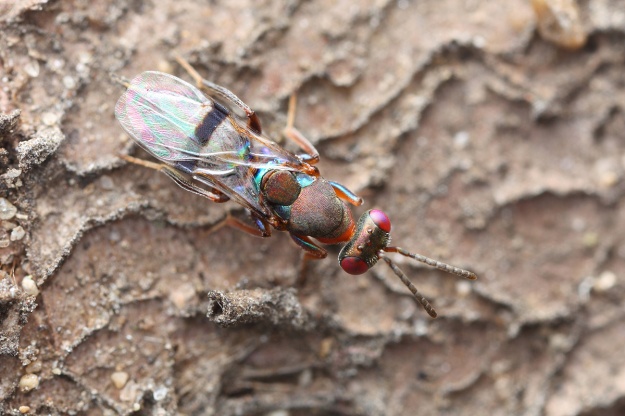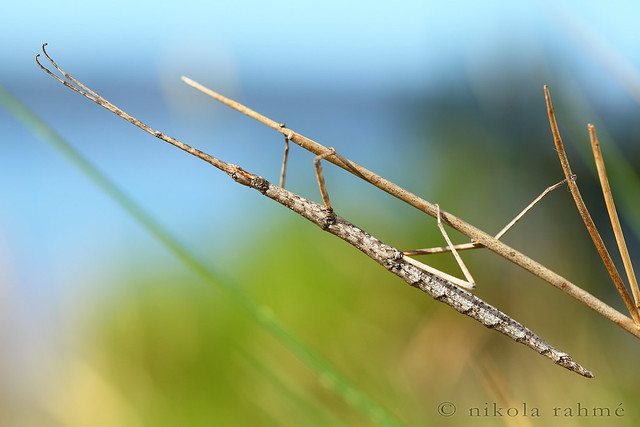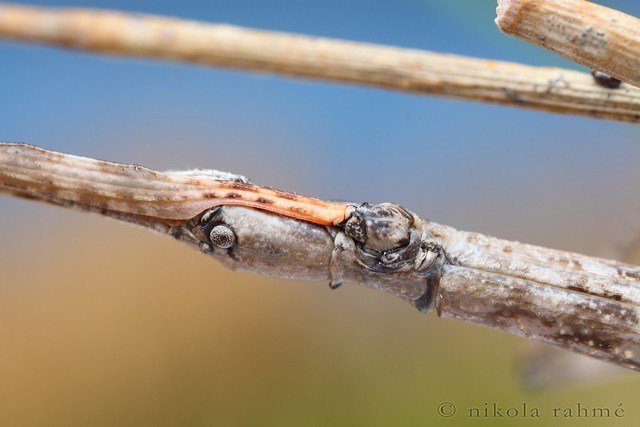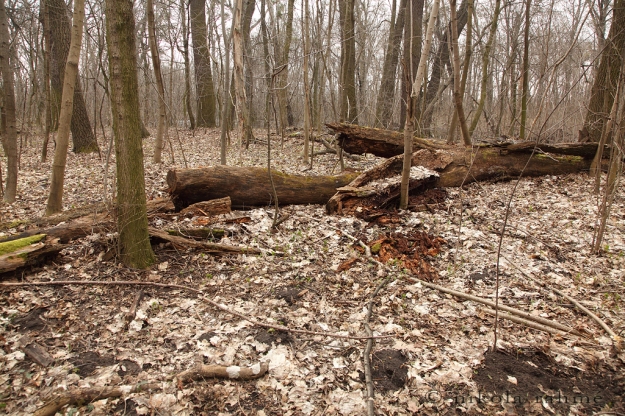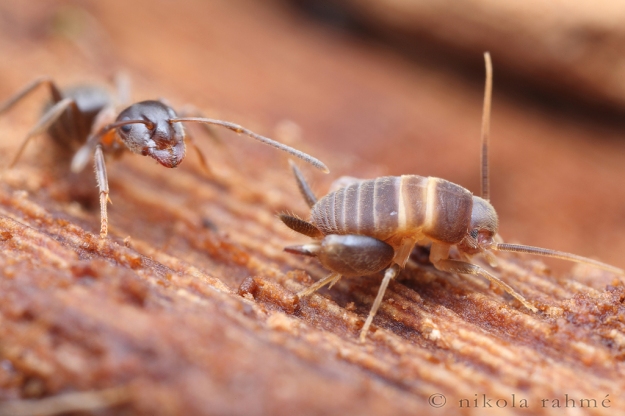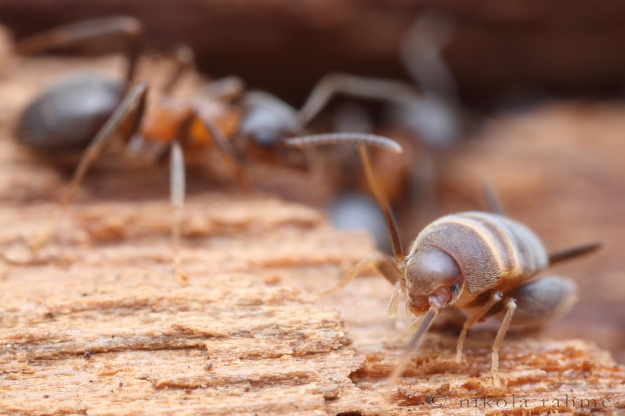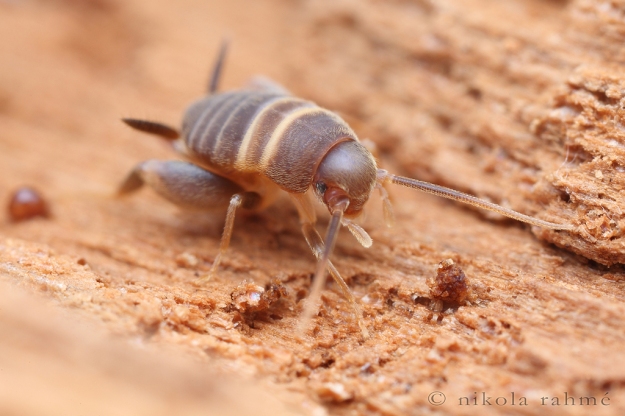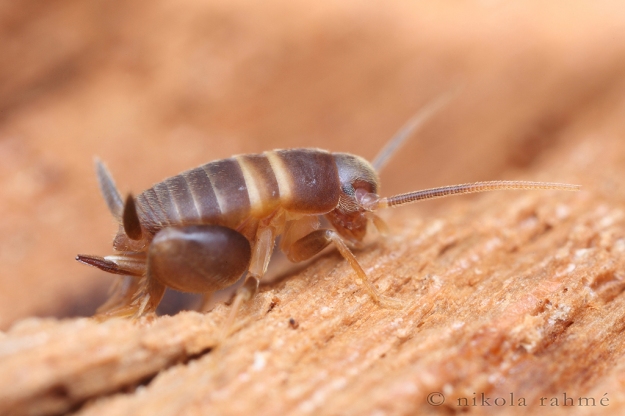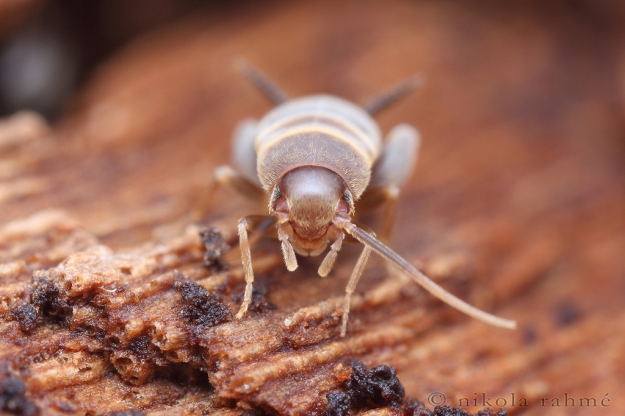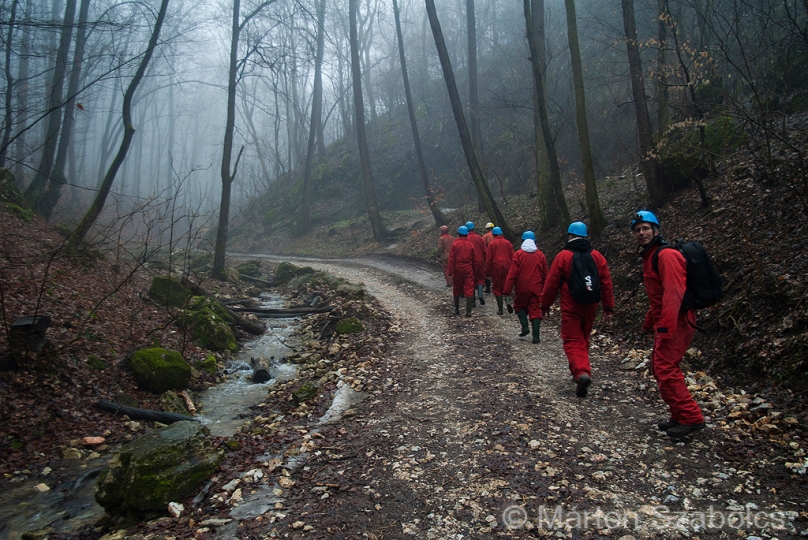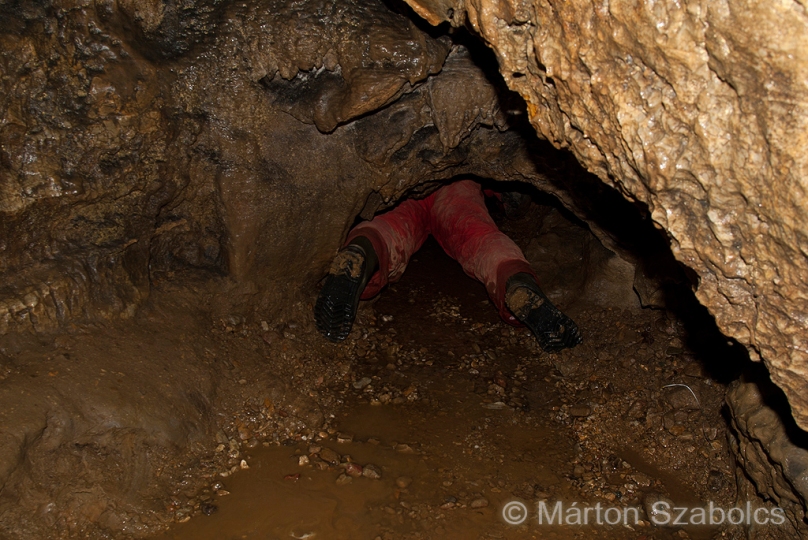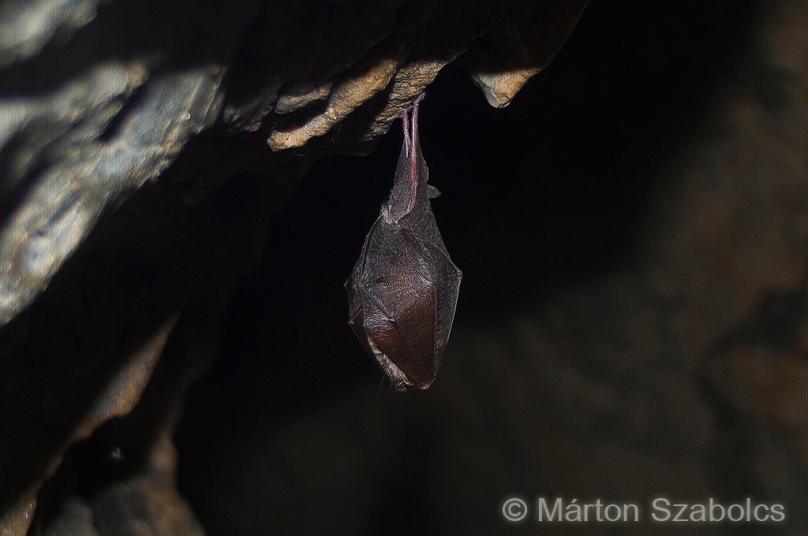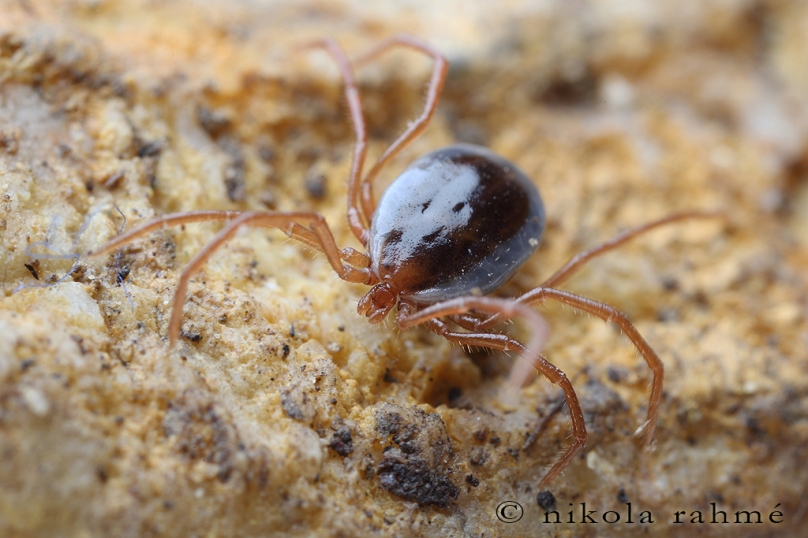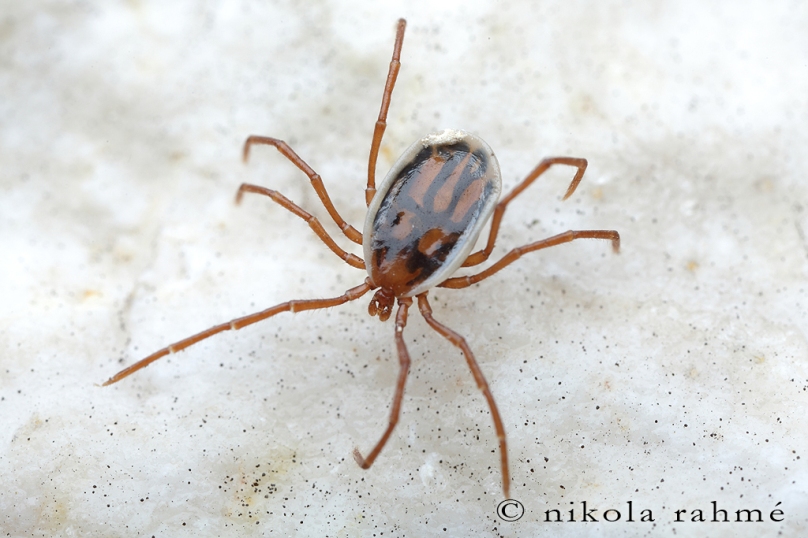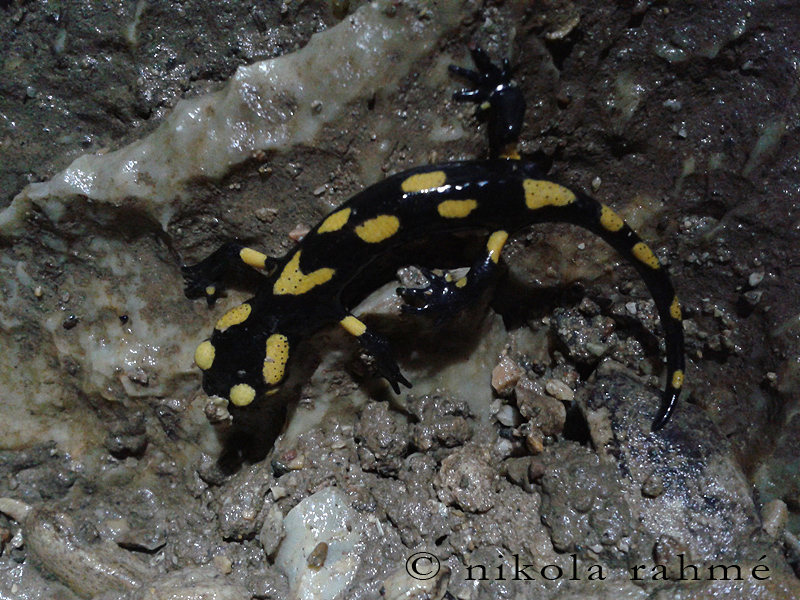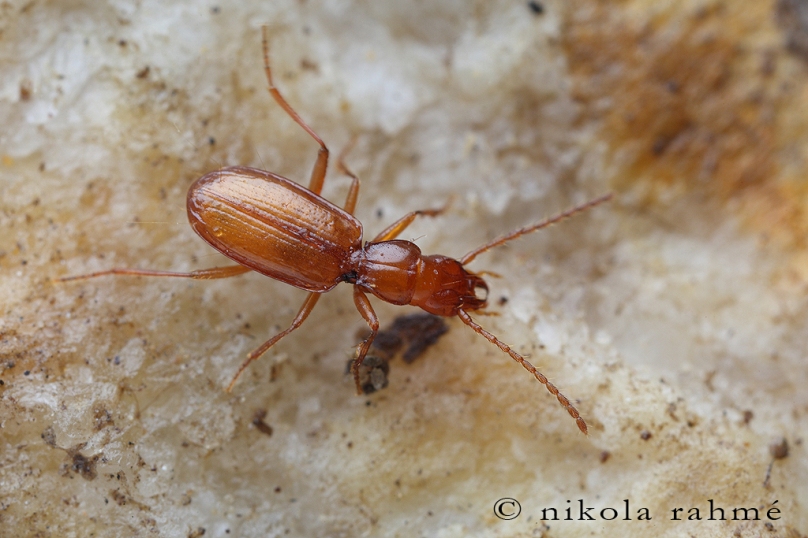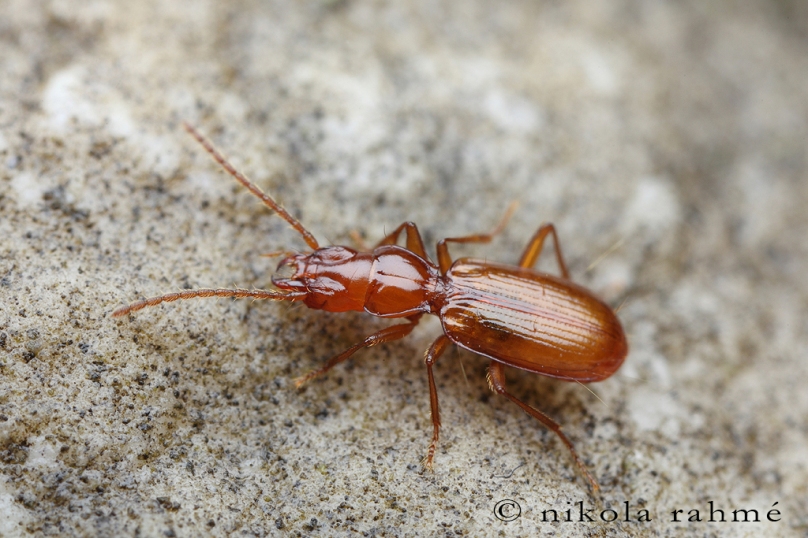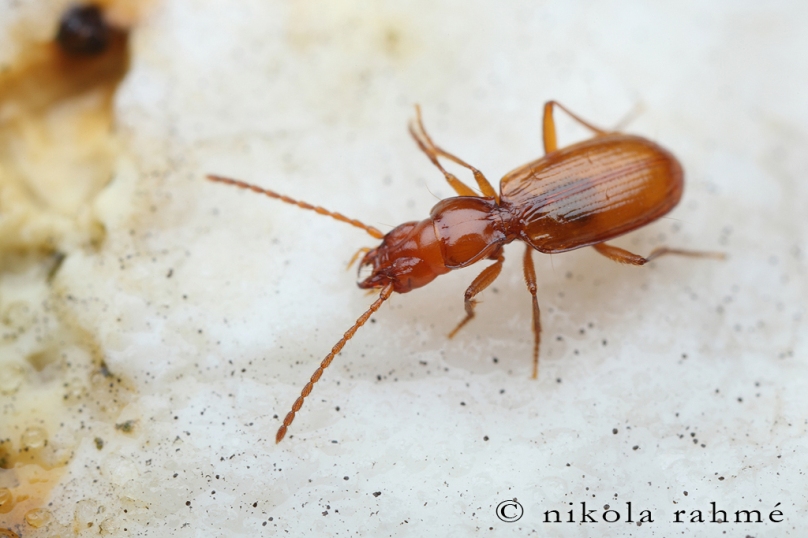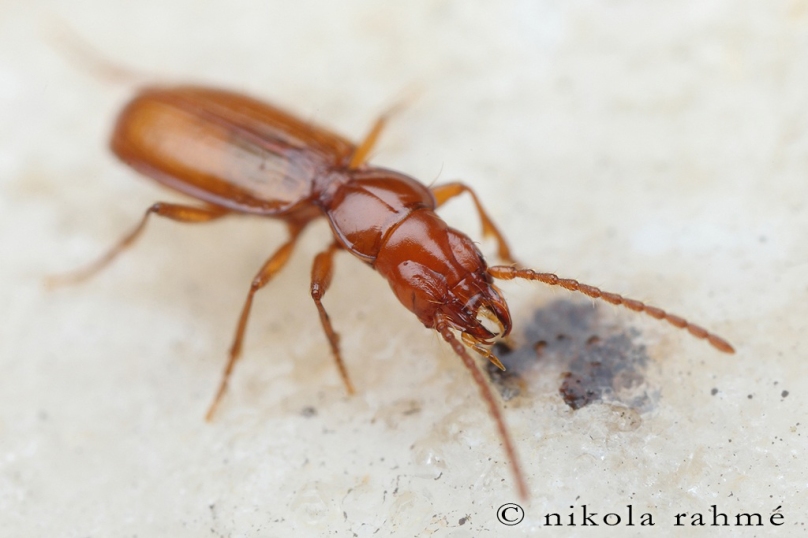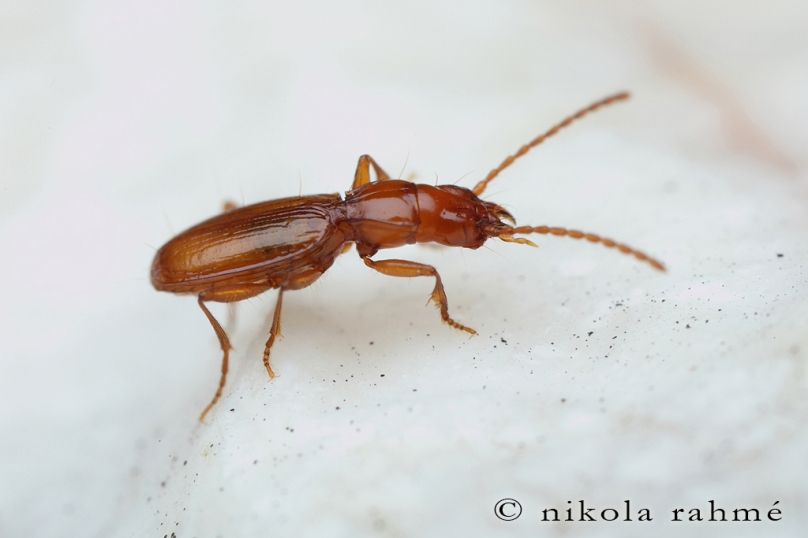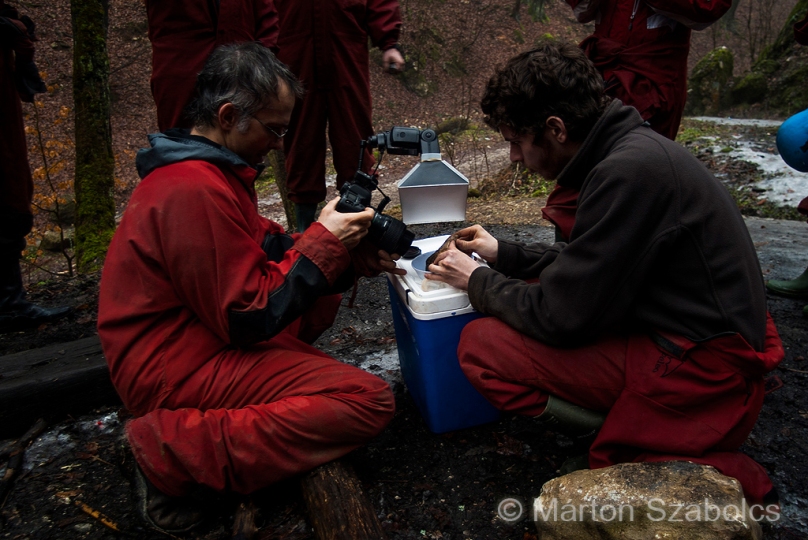Lamprodila festiva despite its small size (5-10 mm) might be one of the most spectacular jewel beetle (Buprestidae) in Central Europe. The species is native to Hungary, although it was discovered only in 1999 near the southwestern border in a juniper (Juniperus communis) woodland. Its known host plants are the members of the coniferous family of Cupressaceae. Till now we did not find it elsewhere in the country, but last year some amateur entomologists reported its presence from different points of Budapest, always related to dry whitecedars (Thuja occidentalis) and false cypress (Chamaecyparis sp.). As the news spread I looked for the signs of the beetles late in the season. Surprisingly, I find dozens of exit holes in gardens, even in the district when I live!
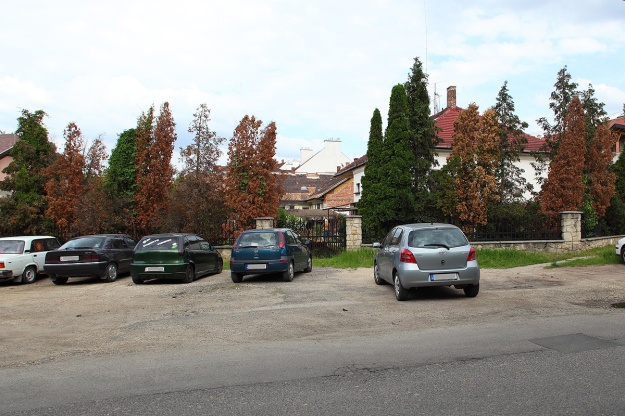
Exit holes can be seen mainly on the trunk:
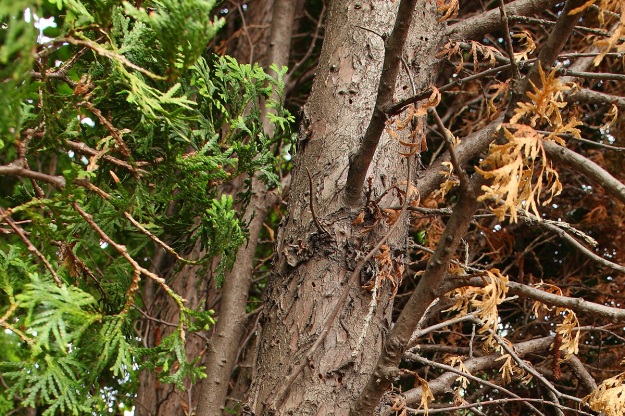
This year‘s spring I have collected pieces of cut Thuja trees along the streets. Galleries of the larvae were present in high number but the insects were already inside the wood, probably in their pupal chambers.
A fully developed pupa shortly before the last molt:
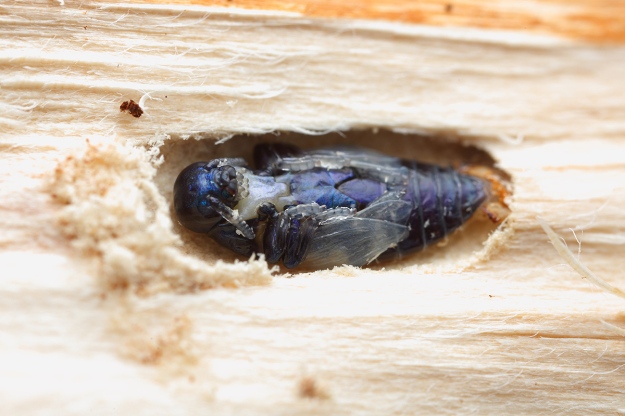
Canon EOS 5DII + MP-E65/2.8 lens + diffused Speedlite 270EX flash
I kept the wood in a plastic bag on the balcony. In late May the adults started to come out:
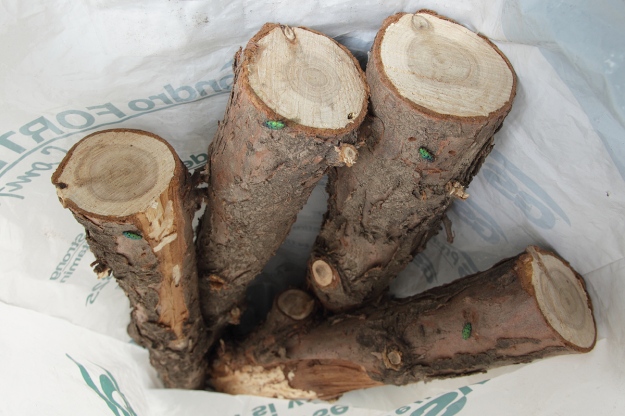
Looking the woods closer, some of the holes were still not left:
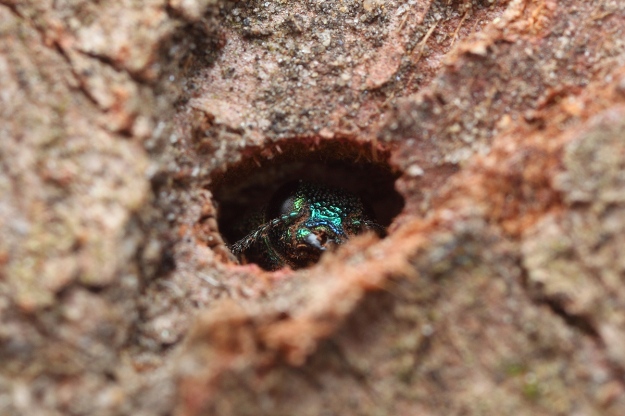
Canon EOS 5DII + MP-E65/2.8 lens + diffused Speedlite 270EX flash
I waited a few minutes and the beetle tried to leave. The moment of the coming out was really short so I could take pictures only with the peeking head:
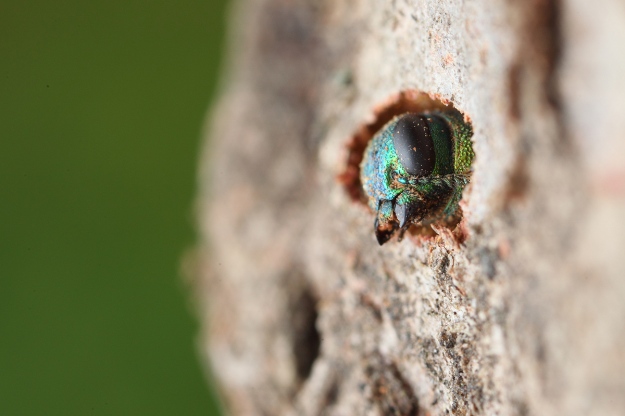
Canon EOS 5DII + MP-E65/2.8 lens + diffused Speedlite 270EX flash
Freshly emerged specimen:
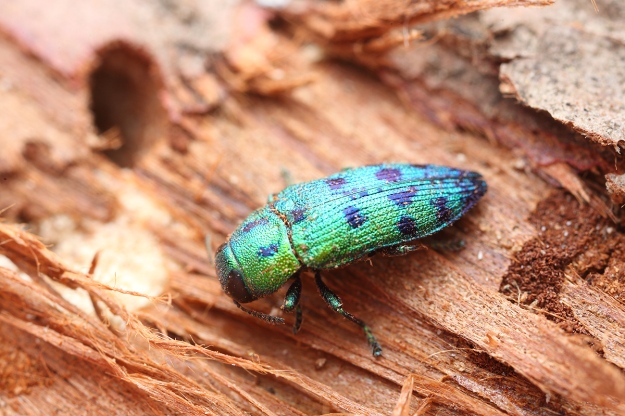
Canon EOS 5DII + MP-E65/2.8 lens + diffused Speedlite 270EX flash
Few days later a friend found a place where hundreds of adults were sitting on small living trees. Here’s his report along with other xylophagous beetles:

I’ve also visited the place to shoot them in their habitat.
Wide angle photos to have the idea about the unnatural circumstances:

Canon EOS 5DII + EF20/2.8 lens + 8 mm extension tube, handheld.
With my friend who is looking for a beetle fallen down to our approach (another one stayed on the plant):
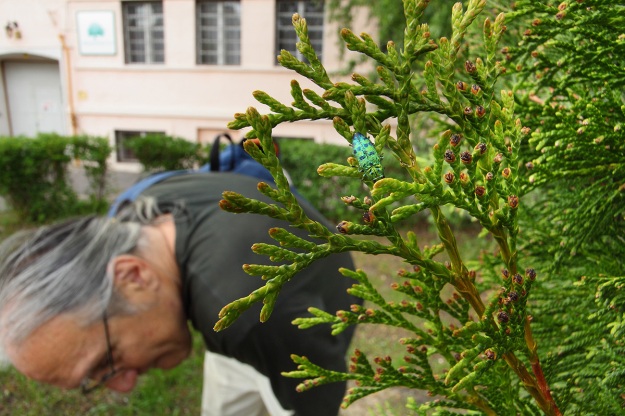
Canon EOS 5DII + EF20/2.8 lens + 8 mm extension tube, handheld.
Two focus stacks for a better depth of field:
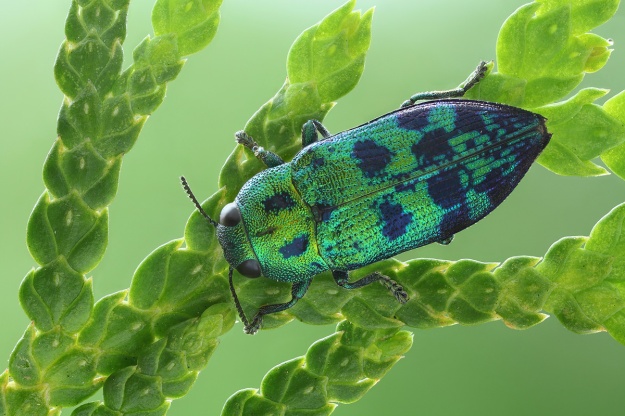
Focus stack of 66 exposures with Canon EOS 5DII + MP-E65/2.8 lens. More info.
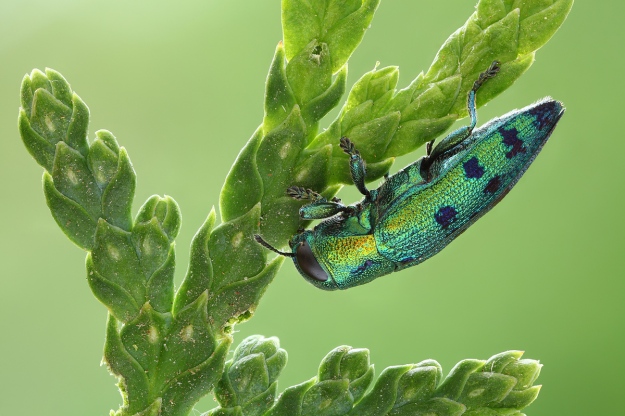
Focus stack of 45 exposures with Canon EOS 5DII + MP-E65/2.8 lens.
This species is not alone on the woods, I found individuals of the tiny parasitic wasp Metacolus unifasciatus (Hymenoptera, Pteromalidae). It is not clear to me if they are related but there’s a chance.
